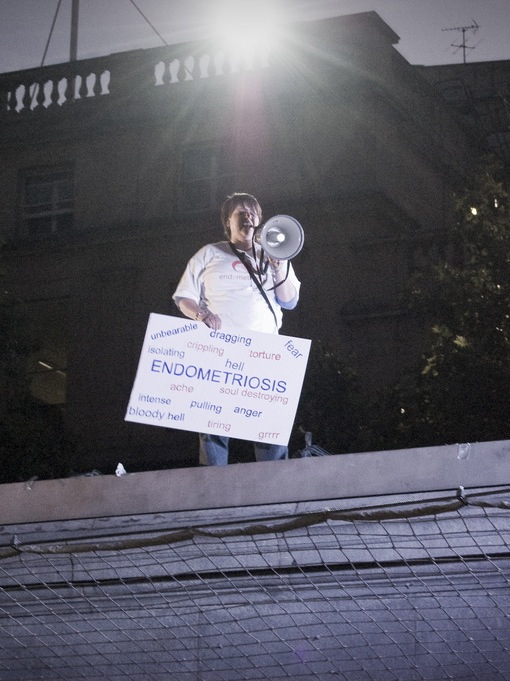You’re busy celebrating Women’s History Month, the Ides of March, Pi(e) Day, St. Patrick’s Day, not to mention Spring Break and numerous lesser known awareness days and months. But don’t let Endometriosis Awareness Month slip away.
Endometriosis — when the uterine lining or endometrium grows outside of the uterus, most commonly elsewhere in the abdomen on the ovaries, fallopian tubes, and ligaments that support the uterus; the area between the vagina and rectum; the outer surface of the uterus; and the lining of the pelvic cavity — affects at least 6.3 million women and girls in the U.S., 1 million in Canada, and millions more worldwide, according to the Endometriosis Association. It frequently results in very painful menstrual cramps and other symptoms, and is notoriously hard to diagnose. There is no known cause, and while there are many treatments, there is no real cure.

Adapted from a photo by Ben Werdmuller // Creative Commons 2.0
https://www.flickr.com/photos/benwerd/3976375987/
So what can you do this month? Just talking about endometriosis — acknowledging it exists or sharing your own story might help a teenage girl realize that those gut-stabbing cramps aren’t normal or another woman to know that it’s not all in her head.
If you have endometriosis and have found a physician or other health care practitioner who is compassionate and has helped you find ways of coping, tell others — refer your friends. Many doctors don’t know that endometriosis often presents as, or with, gastrointestinal symptoms.
Does your local library have up-to-date books about endometriosis? Recommend materials that have helped you.
Share this post on Facebook, Twitter, and other social networks. (The little buttons at the bottom make it easy.)


So glad to see this post! A dear friend of mine in the UK began a blog site this week on endo awareness, and I would like to share this growing resource with the SMCR community. Visit https://endoawareness.wordpress.com/ to read her story, learn about endo, and participate in the next “flash of yellow mob” event!
I cannot recommend enough that women look into Creighton FertilityCare and NaProTechnology (the latter medical methodology is based on the former approach to observing and charting the cycle). You can go to their page http://www.fertilitycare.org, but the best start might be to take a look at the book “The NaProTechnology Revolution” by Dr. Hilgers: https://www.amazon.com/NaPro-Technology-Revolution-Unleashing-Womans/dp/0825306264
Page 275 marks a young woman’s story of dealing with endometriosis, and all the obstacles she had to overcome on the way to diagnosis and through several types of treatments.
I personally know several people who’ve struggled with endometriosis, and overcame it with NaProTechnology.